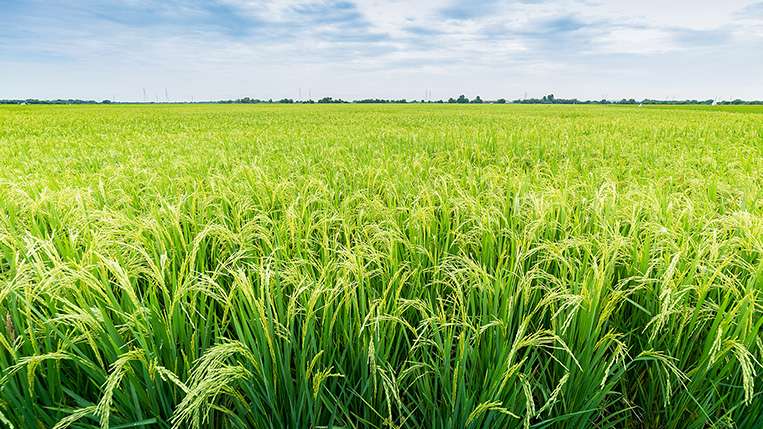Dr. Maxwell D. Asante, Rice Breeder, Council for Scientific and Industrial Research–Crops Research Institute (CSIR-CRI), has disclosed that for Ghana to be sustainable in rice production, the old rice varieties farmers use should be replaced with new varieties.
Dr. Asante said the main constraints facing the rice industry in Ghana include poor seed distribution system, poor land development, poor water management, drought, poor soil fertility, poor fertilizer management, and pests and diseases.
“For sustainable production and competitiveness of Ghana’s rice industry, we have to develop new climate-smart, Jasmine-styled rice varieties to replace older ones. ”
Dr. Maxwell Asante
He noted that current and upcoming rice varieties provide an excellent opportunity for Ghana to achieve rice self-sufficiency. However, the yield gap between these varieties and the average yields on farmers’ fields has to be bridged through land development, water, and nutrient management, reduction in post-harvest losses, and mechanization of activities along the value chain, he stressed.
“If the necessary investments are made into National Rice Development Strategy, which takes into consideration the whole value chain, rice self-sufficiency can be achieved within a decade.”
Dr. Maxwell Asante
Ghana to achieve rice sufficiency in 2024
He made these assertions in a meeting organized by the West Africa Centre for Crop Improvement (WACCI), which sought to develop a compelling case for investments in the value chains of rice, maize, soybean, cowpea, cassava, and tomato for the development of agribusinesses for food security and socio-economic development in Ghana.

Speaking on the topic “Achieving rice self-sufficiency in Ghana: A case for investment into the rice value chain in Ghana”, Dr. Asante said the current demand for milled rice in Ghana is 1,330,000 metric tonnes (MT); adding that local production was 622,000 MT of milled rice (i.e., 987,000 MT of paddy cultivated over an area of 311,000 ha) making Ghana 47 percent self-sufficient.
“Consequently, we spend between $200 to $500 million on rice imports per annum. The current average yield is 3.2 MT/ha.”
Dr. Maxwell Asante
He indicated that about 274,000 hectares (ha) of rainfed lowland is currently under cultivation and nearly 4 million ha of rainfed lowland is unexploited.
He said for Ghana to achieve self-sufficiency by 2024, according to the Ministry of Food and Agriculture’s target, an average yield has to increase from 3.2 to 5.5 MT/ha, and the area under cultivation has to increase from 311,000 to 500,000 hectares.
Replace CRI-AgraRice with CRI-Enapa
He revealed the national rice development strategy- thematic areas which include seed systems, fertilizer marketing, distribution system, harvesting, post-harvest and marketing, irrigation and water control, equipment access and maintenance, and community mobilization.
He said CSIR-Crops Research Institute has produced a new variety of rice called ‘CRI-Enapa’, which has a more stable yield because it is tolerant to drought, uses low nitrogen, tolerant to diseases, and could thus increase the national average yield of 0.5-1 MT/ha.
Dr. Asante recommended that CRI-AgraRice be replaced with CRI-Enapa in rainfed lowlands, which are prone to drought and disease stresses.
He also advocated the need for the training of Extension Officers and farmers in good agricultural practices, which would go a long way to help realize the potential of improved varieties and increase the national average yields by another 1 MT/ha.
READ ALSO: Healthy soils crucial for sustainable agri-food systems- FAO launches SOC sequestration tools




















